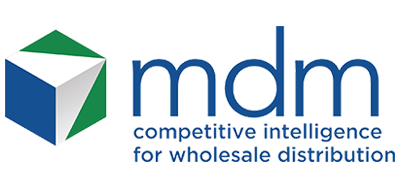We talk a lot about data at MDM, and for good reason. As distributors of all types and sizes continue to make strides along their digital transformation journey, data is the driving force behind their efforts. And while customer data has become the new currency of B2B distribution, managing product information remains key to a modern product website — whether for eCommerce sales or just in the shopping and browsing stage.
Distributors are significantly more diversified than they were 10 years ago — or even three years ago, thanks to COVID-19. The pandemic led many distributors to pivot in their product lines to add PPE and Jan-San lines or bulk up what they already had. The downturn of 2020 and subsequent inflationary pricing environment have distributors reexamining the profitability of other product lines, which may result in even more diversification.
All of that activity means product taxonomy and classification takes on heightened importance, and industry standardization can go along way toward simplifying that process. Unfortunately, most of North America doesn’t utilize product standardization when it comes to descriptors that make it easier to search and find products, whereas large European manufacturers are well-versed with it.

This was the topic of conversation in the latest MDM Podcast, which featured an interview between MDM Analytics Manager Donnie Williamson and Mary Shaw, executive director of ETIM North America — a non-profit regional member of ETIM International, which represents 22 member ETIM organizations all over the world with the shared objective of achieving a sustainable classification standard for all technical products worldwide.
ETIM NA was founded by Distributor Data Solutions and is responsible for supporting the implementation and adoption of the ETIM Technical Information Model (ETIM) in the North American wholesale electrical industry, and associated verticals.
ETIM-based classification combines a uniform structuring data-entry and exchange format with exclusively factual product information — as specified by the producer. This allows for an up-to-date, correct and complete exchange of information between yourself and all other parties in the supply chain (in all directions).
In a nutshell, ETIM is a common language for product classification.
“But what makes the model special is that every class feature, value, unit of measure is predetermined by a global standards body made up of industry experts, manufacturers and distributors — people who know what the product is, how it works, how it’s searched for by end users,” Shaw explains. “Even more special, each piece of data within the model has an alphanumeric code assigned to it that can be communicated electronically in any language without the need to send words. So, no normalizing or manipulating of the data is needed. These descriptors come from the manufacturers and can fit beneath any distributor’s internal taxonomy.”
ETIM NA is also charged with translating the Model into North American English, French Canadian and Mexican Spanish, as well as identifying of additional products, features and values pertaining to products being sold into the North American wholesale market.
Many distributors were just starting down the path of their digitalization journey when the pandemic hit and disrupted everything in their supply chain. One benefit coming out of the crisis, Shaw said, is that it made management more aware of the need for standardized product information to support and accelerate those digital initiatives.
“They now realize how important it is for information to match between channel partners all the way down to the contractors, engineers or the product influencers,” Shaw says. “And it now must happen at lightning speed, especially with more and more technical products being introduced into the market daily.”
So, why don’t North American manufacturers already have standardized product data at scale like their European counterparts? It largely comes down to their reluctance to share data, Shaw explains, and North American companies having a hard time getting past the fact of commoditization.
“Here, you have state-by-state complications. You can sell to this guy but not to this guy,” Shaw told me back in mid-May. “They’re even competing with themselves. Europe is better organized. They get past the fear of commoditization. Everyone benefits. They realized early on that following a data standard was better for the industry as a whole.”
The discussion between Shaw and Williamson was a little more technical than our MDM Podcasts typically explore, but not overly so for a layperson like myself. It’s well worth a listen via the audio player above. And you can check our full library of episodes at our podcasts page here.
Related Posts
-
In a recent MDM webcast, ProfitOptics CEO and Founder Tony Pericle summarizes how distributors can…
-
During a recent podcast, Summit Electric’s Sheila Hernandez and MDM’s Tom Gale talk about the…
-
U.S. manufacturing corporations’ seasonally adjusted after-tax profits in the first quarter of 2022 totaled $261.9…



